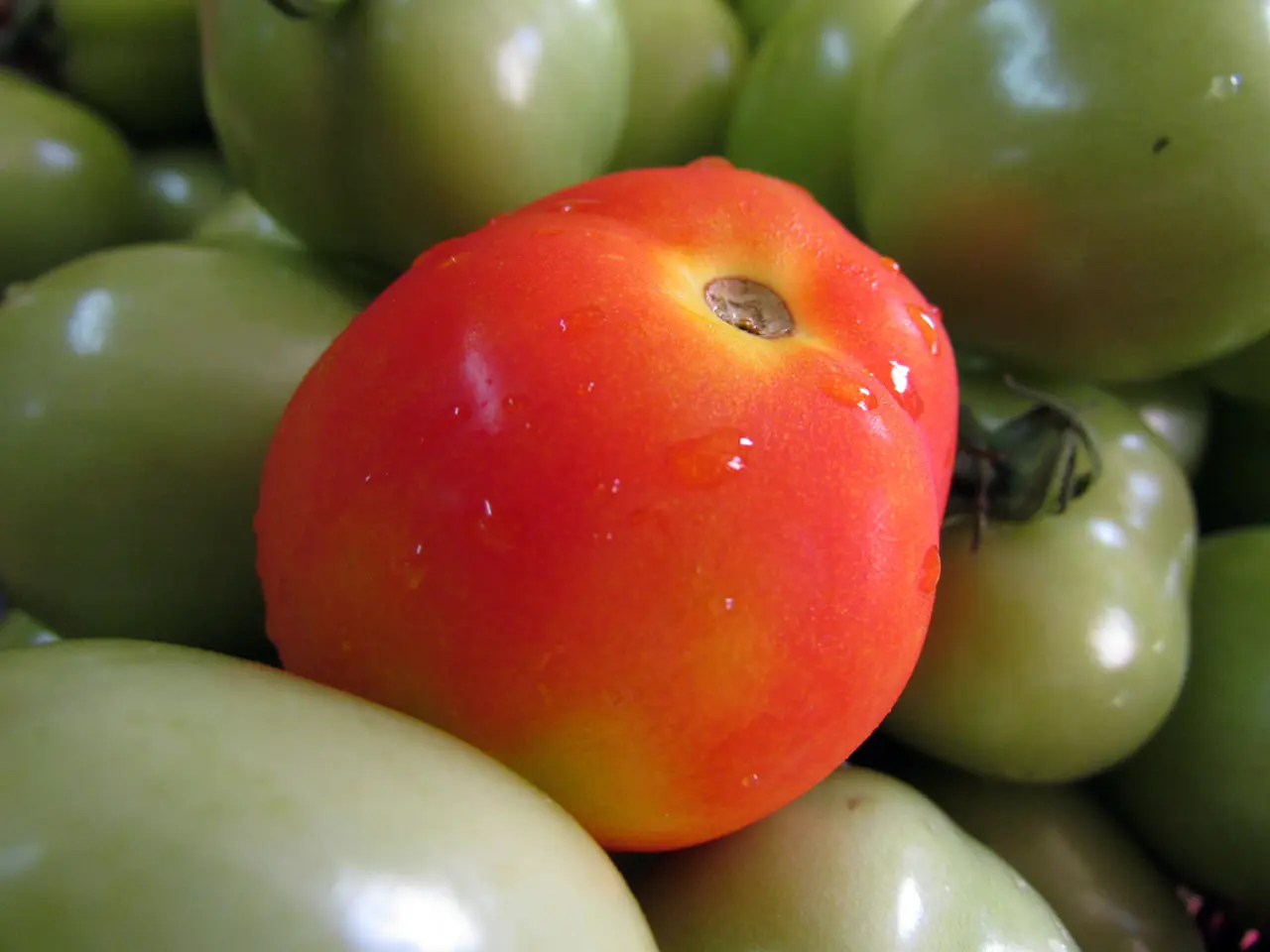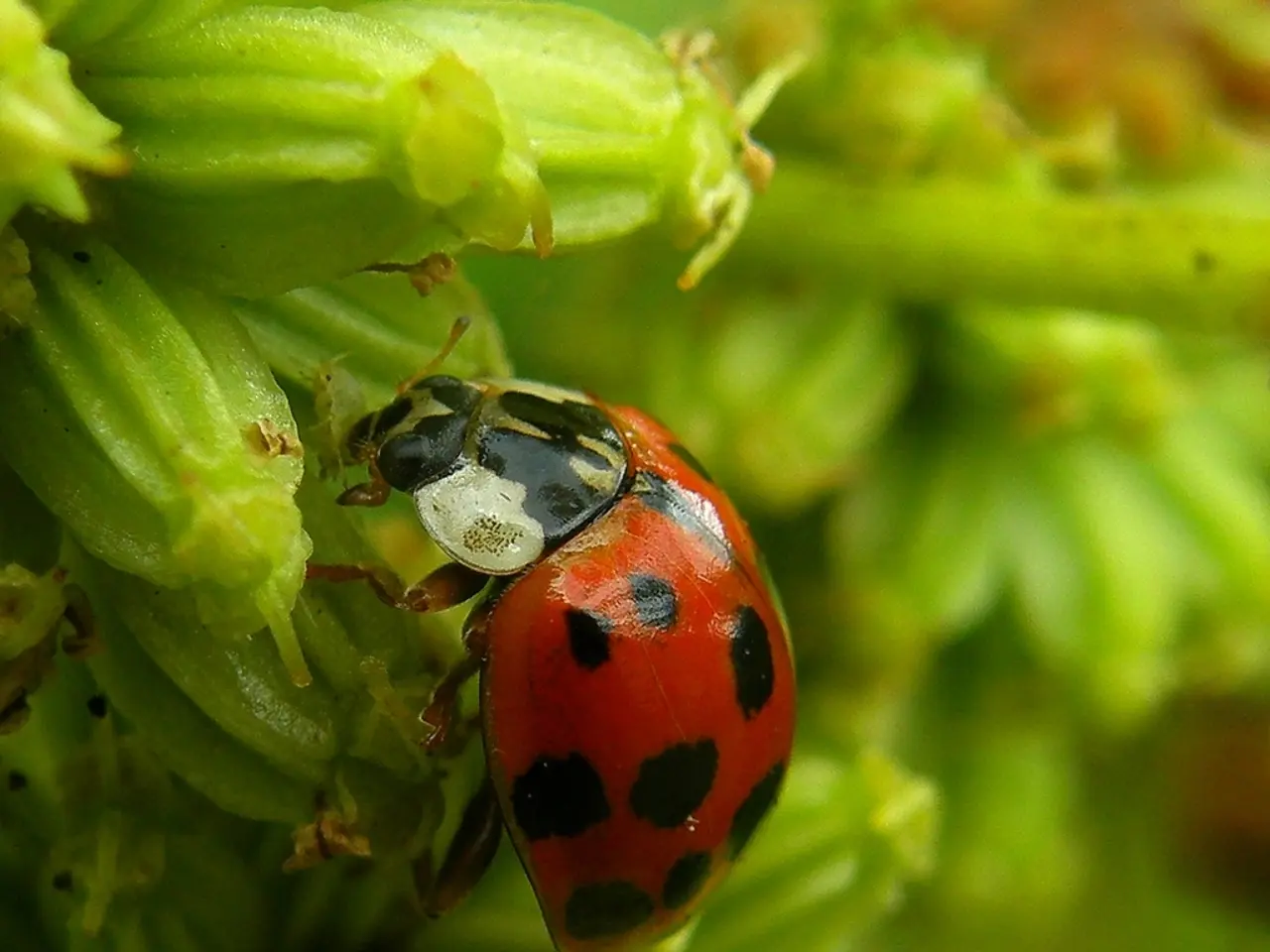Tomato Fungal Disease Outbreak
In the world of gardening, few challenges are as daunting as the threat of tomato blight. This fungus-like infection, known as Phytophthora infestans, can quickly devastate tomato plants if not properly managed. To help you protect your precious crops, here's a guide to preventing and controlling tomato blight, both in outdoor gardens and greenhouses.
**Prevention Strategies**
The key to a successful tomato harvest lies in a combination of cultural practices, careful monitoring, and timely interventions.
**Cultural Practices**
1. **Crop Rotation:** Rotate tomato crops every 3 years to minimize disease build-up in the soil. 2. **Mulching:** Apply a thick layer of mulch around plants to create a barrier between soil and leaves, reducing soil splash and disease spread. 3. **Proper Spacing:** Plant tomatoes at least 3 feet apart to ensure good air circulation, which helps foliage dry quickly and reduces humidity around plants. 4. **Supports and Cages:** Use stakes or cages to keep plants off the ground and improve airflow, which further minimizes disease risk. 5. **Watering:** Water at the base of the plant, and avoid overhead watering. Water early in the day so foliage dries quickly, reducing the opportunity for fungal spores to germinate. 6. **Pruning:** Prune lower leaves, especially up to a foot above the soil, to reduce the chance of soil-borne fungal spores reaching foliage. Remove up to a third of infected foliage if disease appears. 7. **Sanitation:** Clean pruning tools with a 10% bleach solution, and do not compost blight-infected plants to prevent disease spread.
**Companion Planting and Environment**
1. **Companion Plants:** Grow basil or marigolds near tomatoes; they can help deter pests and may indicate disease early. Basil is especially noted for showing powdery mildew before tomatoes do. 2. **Greenhouse Ventilation:** Maintain good ventilation in greenhouses to reduce humidity and prevent the ideal conditions for fungal growth.
**Control Measures**
1. **Remove Infected Parts:** Promptly remove and destroy infected leaves, stems, or fruit. Do not compost them. 2. **Apply Fungicides:** Use a tomato-specific fungicide as soon as symptoms appear or when weather conditions are favourable for disease. Follow label instructions carefully. 3. **Organic Options:** Some gardeners use diluted hydrogen peroxide sprayed weekly as a preventive measure after pruning.
**Post-Harvest**
1. **Harvest Carefully:** Avoid harvesting when plants are wet, and remove any damaged fruit immediately. 2. **Storage:** Store fruits in a cool, dry place and monitor regularly for signs of blight.
By integrating these strategies, you can significantly reduce the risk and impact of tomato blight, both outdoors and in greenhouse environments.
Some tomato varieties, such as 'Fandango', 'Latah', 'Red Alert', 'Berry', 'Tomato 'Lizzano' F1', 'Ferline F1', 'Fantasio F1', and 'Legend', are noted for their blight tolerance. Growing tomatoes in a greenhouse or polytunnel provides better protection, as outdoor tomatoes are more susceptible to blight.
Remember, new blight strains in the UK may be able to produce resting spores that remain on plant material through winter and could reinfect next year's crop. Therefore, it's crucial not to leave potato tubers in the ground at harvest as they, too, could harbour blight.
By staying vigilant and proactive, you can enjoy a bountiful tomato harvest, free from the threat of blight. Happy gardening!
Adopting a combination of cultural practices, such as crop rotation, mulching, proper spacing, using supports, careful watering, pruning, sanitation, and companion planting, can help minimize the risk of tomato blight in both home-and-garden outdoor gardens and greenhouses. Additionally, maintaining good ventilation in greenhouses, promptly removing and destroying infected tomato parts, and applying tomato-specific fungicides are essential control measures for preventing and managing tomato blight.




